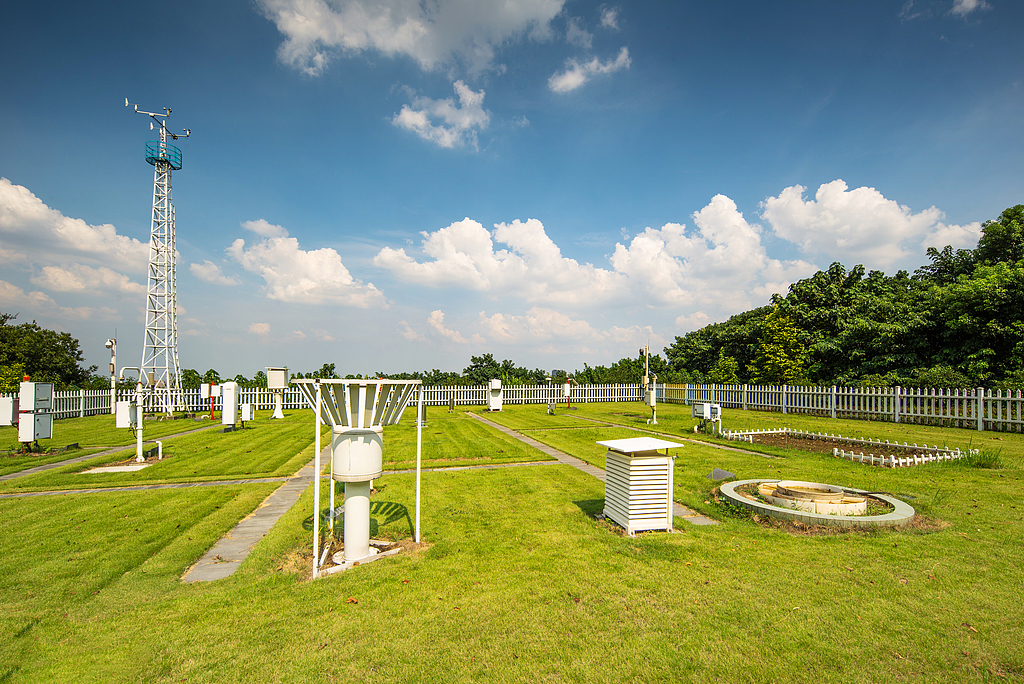When encountering cold air in March: in-depth analysis of significant cooling and prevention strategies, Dyuan comes to escort
This article delves into the essence and causes of cold air, analyzes why frequent cold air activity in March can easily lead to significant cooling, provides a detailed interpretation of the classification of cold air levels and the criteria for defining cold waves, and elucidates their impact on various industries. At the same time, in the face of the significant cooling in March, Dyuan products play an important supporting role in monitoring cold air activity in predicting strong cooling.
Cold air, defined by the difference in temperature levels, is air located in a low-temperature zone. Its origin is mainly in the distant Arctic Ocean and the harsh Siberian region. In these high latitude regions, the winter nights are long, the days are short, and the sunshine hours are short. In polar regions, even polar night phenomena may occur, where the sun disappears for a long time. This makes the heat obtained by the earth from the sun negligible, and at night, the ground radiates and dissipates a large amount of heat into space, causing the near surface atmosphere to continue cooling with the ground, resulting in a continuous decrease in temperature, and a large amount of cold air gradually accumulating. Guided by the northwest airflow, this low-temperature cold air mass advances from north to south, affecting Mongolia, northern China, eastern China, and even most parts of China.
In March, cold air activity is frequent and can easily cause significant cooling, mainly because it is in the transitional period from winter monsoon to summer monsoon. At this stage, the cold air from the north still occasionally moves southward, and when it meets and confronts the warm and humid air from the south, it will form sustained low temperature and rainy weather. Moreover, the later the cold air moves southward, the stronger its intensity, and the wider its cooling range, the greater the possibility of significant cooling. For example, when the cold air force in Siberia suddenly strengthens in March, it is highly likely to bring significant cooling weather to many parts of our country during its southward movement.
According to the national standard "Cold Air Classification" revised in 2017, cold air can be divided into five levels: weak cold air, moderate intensity cold air, strong cold air, strong cold air, and cold wave. The classification is based on two indicators: the degree of decrease in the lowest temperature in a certain area during a certain period of time after being affected by cold air, and the daily lowest temperature value. Among them, weak cold air can cause the daily minimum temperature in a certain area to drop by less than 6 ℃ within 48 hours; Moderate intensity cold air causes the daily minimum temperature in a certain area to drop by more than or equal to 6 ℃ but less than 8 ℃ within 48 hours; Strong cold air causes the daily minimum temperature in a certain area to drop by more than or equal to 8 ℃ within 48 hours, but fails to lower the daily minimum temperature in that area to 8 ℃ or below; Strong cold air causes the daily minimum temperature in a certain area to drop by more than or equal to 8 ℃ within 48 hours, and causes the daily minimum temperature in that area to drop to 8 ℃ or below; The cold wave is even more severe, requiring the daily minimum temperature in a certain area to drop by more than or equal to 8 ℃ within 24 hours, or by more than or equal to 10 ℃ within 48 hours, or by more than or equal to 12 ℃ within 72 hours, and to lower the daily minimum temperature in that area to 4 ℃ or below.
In the agricultural sector, the significant cooling in March had a significant impact on crops. During the spring plowing season, the strong winds brought by cold air can easily cause crops to fall, and cooling can cause crops to suffer from freezing damage. The accompanying rain and snow weather can also have adverse effects on agricultural activities such as sowing, harvesting, drying, and transportation. However, from another perspective, moderate snowfall is beneficial for increasing soil moisture in fields, and low temperatures can also kill insect eggs and adults in the soil, reducing pests and diseases in the coming year. Taking March 2024 as an example, some wheat fields in North China experienced significant cooling, which inhibited the growth of wheat seedlings and even caused freezing damage, affecting the greening and subsequent growth of wheat.
For health, the temperature drops sharply in March, and if people don't add clothes and keep warm in time, they are prone to catching a cold. Low temperature stimulation can also cause vasoconstriction, exacerbating the condition of patients with cardiovascular and cerebrovascular diseases. In some hospitals, during the period of significant cooling in March, the number of cold patients and emergency patients with cardiovascular and cerebrovascular diseases will significantly increase.
In terms of energy, the arrival of cold air in March led to increased heating demand from residents due to strong winds, cooling temperatures, snowfall, and other weather conditions. The relevant departments have to strengthen the scheduling and supply of energy such as coal, electricity, and natural gas. Meanwhile, the rain, snow, and freezing disasters caused by strong cold air can easily lead to icing on transmission lines, affecting power transmission. For example, in March 2024, due to a heavy snowfall caused by cold air, some transmission lines in Northeast China were covered in ice, resulting in brief power outages in some areas.
Transportation is also greatly affected. In March, cold air is often accompanied by rainy and snowy weather. Low temperature rain, snow, and freezing can make the road slippery and the visibility worse, seriously affecting driving safety. When the road freezes, vehicles must slow down, increase the distance between vehicles, and avoid sudden braking. In addition, rainy and snowy weather also has an impact on travel by plane, train, etc., and flight delays, train delays, and other situations may occur from time to time. In March 2024, a southern city experienced continuous rainfall caused by a cold air, resulting in road congestion, highway closures, and cancellation of some flights.
Faced with the significant cooling in March, residents should closely monitor the weather forecast and warning information released by the meteorological department, add clothing in a timely manner, and take good measures to keep warm. Agricultural producers can protect crops by covering them with plastic film, building windbreak barriers, and other methods. The transportation department should prepare in advance for road snow and ice removal, and strengthen traffic diversion. And Dyuan products play an important role in it. Dyuan utilizes advanced meteorological monitoring technology and big data analysis algorithms to monitor various meteorological elements such as temperature, humidity, air pressure, wind direction and speed in the atmosphere in real time. Can capture signs of cold air moving southward in advance, predict its movement path and impact range. For example, Dyuan products can accurately determine the position of the cold air front through analysis of various meteorological elements and meteorological radar data, issue cooling warnings several days in advance, and fight for sufficient response time for relevant departments and the public to take preventive measures in advance and reduce losses caused by cold air.
Summary: The significant cooling in March is closely related to cold air activities. Understanding the formation, classification, and impact of cold air on various industries, taking effective response and prevention measures, and combining advanced meteorological monitoring and prediction technologies such as Dyuan products, we can better cope with the significant cooling weather in March, reduce its adverse effects on life and production, and ensure the normal operation of society and the safety of people's lives and property.
More News

Recommended software and hardware configuration for provincial conventional meteorological observation stations
2025.03.28

The official website of Dyuan Technology has been launched, opening a new chapter in intelligent monitoring services
2025.03.25

Dyuan Technology shines at the International Meteorological Exhibition, Innovative products lead new changes in the industry
2025.03.25

Dyuan shines brightly at the Asia Pacific International Meteorological and Hydrological Exhibition, attracting attention with innovative solutions and products
2025.03.25




